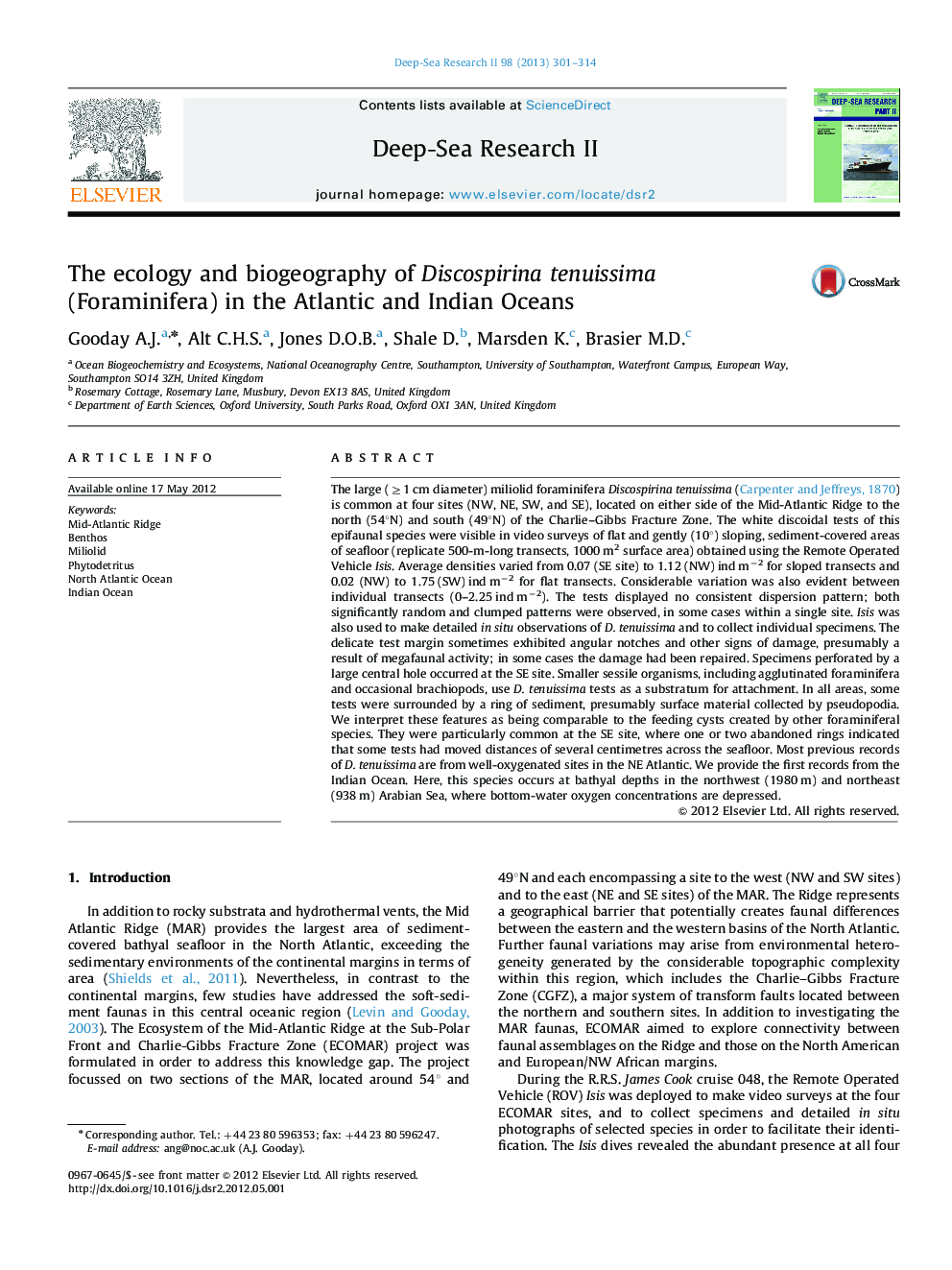| کد مقاله | کد نشریه | سال انتشار | مقاله انگلیسی | نسخه تمام متن |
|---|---|---|---|---|
| 6384310 | 1326316 | 2013 | 14 صفحه PDF | دانلود رایگان |
عنوان انگلیسی مقاله ISI
The ecology and biogeography of Discospirina tenuissima (Foraminifera) in the Atlantic and Indian Oceans
ترجمه فارسی عنوان
زیست شناسی و بیوگرافی دیسوسپیرینا تنیسیمای (فرامینیفرا) در اقیانوس اطلس و اقیانوس هند
دانلود مقاله + سفارش ترجمه
دانلود مقاله ISI انگلیسی
رایگان برای ایرانیان
کلمات کلیدی
موضوعات مرتبط
مهندسی و علوم پایه
علوم زمین و سیارات
زمین شناسی
چکیده انگلیسی
The large (â¥1 cm diameter) miliolid foraminifera Discospirina tenuissima (Carpenter and Jeffreys, 1870) is common at four sites (NW, NE, SW, and SE), located on either side of the Mid-Atlantic Ridge to the north (54°N) and south (49°N) of the Charlie-Gibbs Fracture Zone. The white discoidal tests of this epifaunal species were visible in video surveys of flat and gently (10°) sloping, sediment-covered areas of seafloor (replicate 500-m-long transects, 1000 m2 surface area) obtained using the Remote Operated Vehicle Isis. Average densities varied from 0.07 (SE site) to 1.12 (NW) ind mâ2 for sloped transects and 0.02 (NW) to 1.75 (SW) ind mâ2 for flat transects. Considerable variation was also evident between individual transects (0-2.25 ind mâ2). The tests displayed no consistent dispersion pattern; both significantly random and clumped patterns were observed, in some cases within a single site. Isis was also used to make detailed in situ observations of D. tenuissima and to collect individual specimens. The delicate test margin sometimes exhibited angular notches and other signs of damage, presumably a result of megafaunal activity; in some cases the damage had been repaired. Specimens perforated by a large central hole occurred at the SE site. Smaller sessile organisms, including agglutinated foraminifera and occasional brachiopods, use D. tenuissima tests as a substratum for attachment. In all areas, some tests were surrounded by a ring of sediment, presumably surface material collected by pseudopodia. We interpret these features as being comparable to the feeding cysts created by other foraminiferal species. They were particularly common at the SE site, where one or two abandoned rings indicated that some tests had moved distances of several centimetres across the seafloor. Most previous records of D. tenuissima are from well-oxygenated sites in the NE Atlantic. We provide the first records from the Indian Ocean. Here, this species occurs at bathyal depths in the northwest (1980 m) and northeast (938 m) Arabian Sea, where bottom-water oxygen concentrations are depressed.
ناشر
Database: Elsevier - ScienceDirect (ساینس دایرکت)
Journal: Deep Sea Research Part II: Topical Studies in Oceanography - Volume 98, Part B, 15 December 2013, Pages 301-314
Journal: Deep Sea Research Part II: Topical Studies in Oceanography - Volume 98, Part B, 15 December 2013, Pages 301-314
نویسندگان
Gooday A.J., Alt C.H.S., Jones D.O.B., Shale D., Marsden K., Brasier M.D.,
